When handloaders and hunters who began their careers in the 1950s and 60s hear the name Nosler, it brings only one thing to mind: the great Nosler Partition bullet. Conceived by avid hunter John Nosler, it consisted of two individual lead cores separated by an integral partition formed in the jacket between the two. The jacket wall thickness at the front was such that it allowed good expansion at normal impact velocities for cartridges at the time. The expansion was stopped by the partition about halfway down the length of the bullet. At least half the bullet’s weight thus kept pushing forward even if some of the front sheared off due to striking bone. Superior penetration seemed certain; it worked!
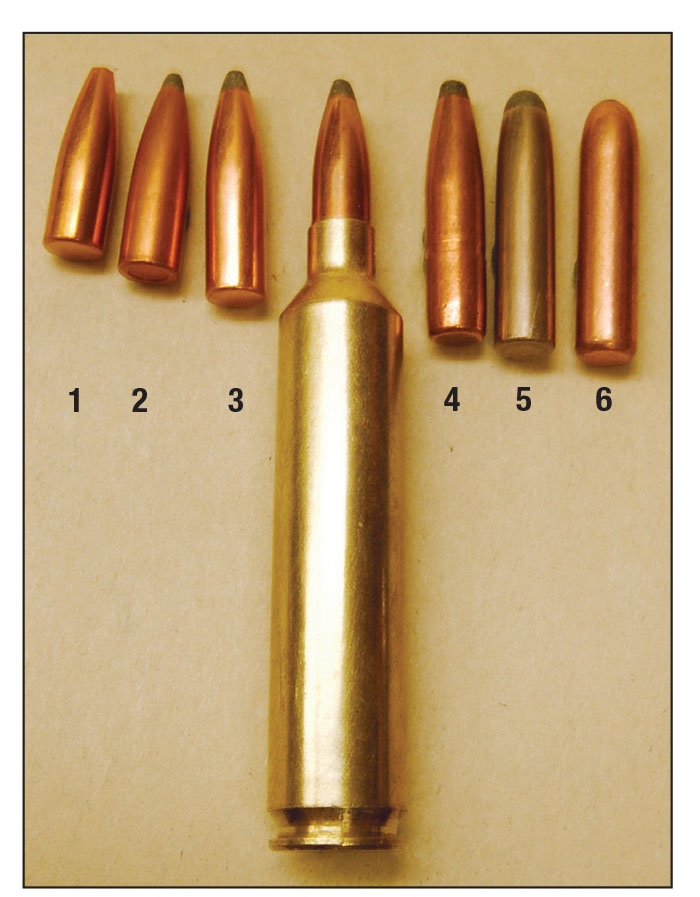
Factory length 26 Nosler and seating depth of bullets: (1) 85 grain, (2) 100 grain, (3) 120 grain, (4) 140 grain, (5) 155 grain and (6) 160 grain.
Partitions are still available in many calibers.
Nosler has gone on to create many successful bullet designs. Currently, these include AccuBond (bonded core), Expansion Tip (lead-free), Ballistic Tip (plastic-tipped), Varmageddon (varmint), RDF (Reduced Drag Factor) and Custom Competition (match target). All have differing construction and ogive shape to match intended usage.
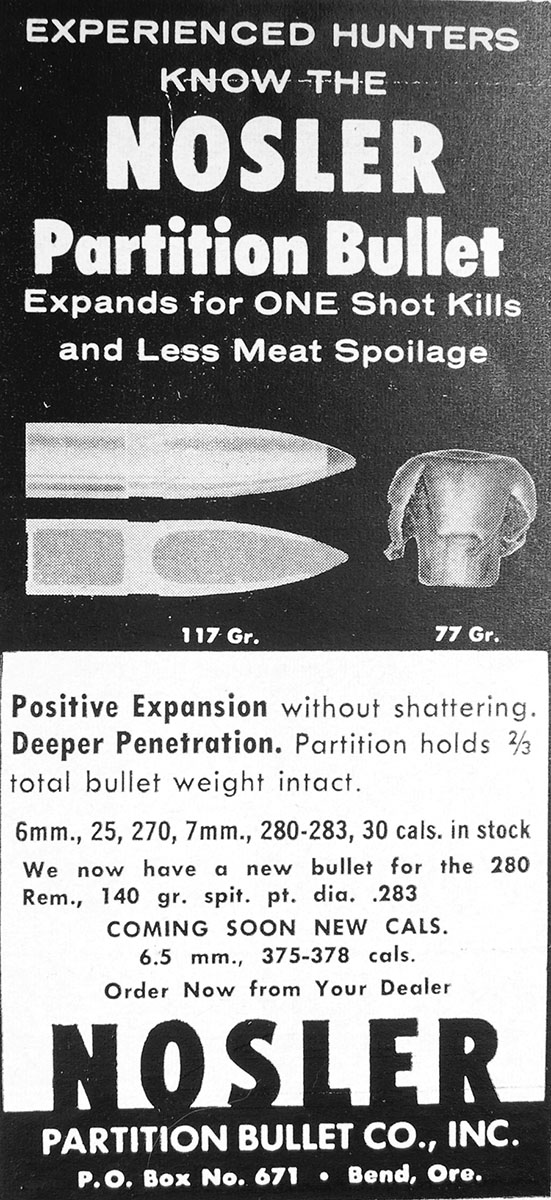
The Nosler Partition was one of the first to replace conventional cup-and-core construction. This ad is from the 1950s.
Keeping up with the ever-changing bullet market for handloaders is not surprising. What is notable is Nosler’s announcement in 2011 of its Model 48 Varmint Rifle. This was and is a semicustom bolt rifle featuring a composite stock, quality barrel properly fit and chambered.
In 2013, the Model 48 Legacy (walnut stock) and Trophy (composite stock) hunting rifles were added. Other iterations have been made since. Action length and all chamberings were for 30-06 length cartridges. Then, in the fall of 2013, Nosler announced a new, very high-velocity hunting round was coming for the Model 48. It would be the 26 Nosler, the first to bear the company name.
The new round would use the standard 6.5mm-caliber bullet diameter of .264-inch. However, the 6.5mm figure is really the caliber (barrel land-to-land diameter), which is .256 inch; 6.5mm equals .256 inch. Thus, the number 26 in the new round’s name means little (as in most American cartridges) except to easily differentiate it from at least four more Nosler cartridges that were yet to come.
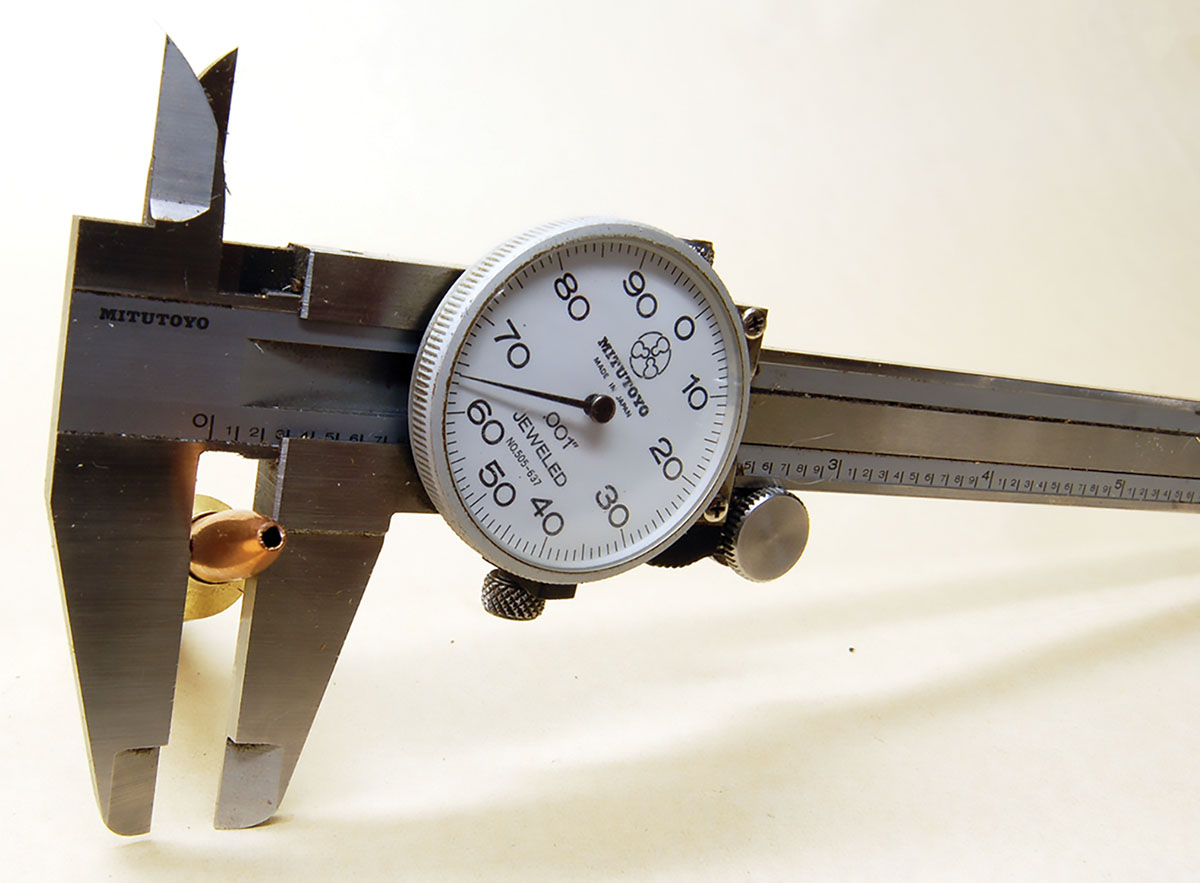
A caliper showing the 26 Nosler uses common .264-inch bullets.
The cartridge case base (head) dimensions come from the old (1905) 404 Jeffery, now often called the 404 Rimless. Several years ago, some bright lad noticed that the base of the 404 Jeffery was only some .010-inch larger than the common belted magnum. It would fit a magnum bolt face with little modification. In a few years, the belted magnum case was dead for new cartridge use. Everything from stubby .22s to 375 H&H length rounds appeared on 404 Jeffery base-size cases. The larger base and, thus, larger body diameter gave greater powder capacity, and more powder is always good, right?
So, the 26 Nosler uses the 404 Jeffrey base case, with a case length of 2.590 inches and a maximum overall loaded length of 3.335 inches, the same loaded length as the 30-06. This is good as such actions are easier to find, cheaper and lighter in weight than longer magnum models.
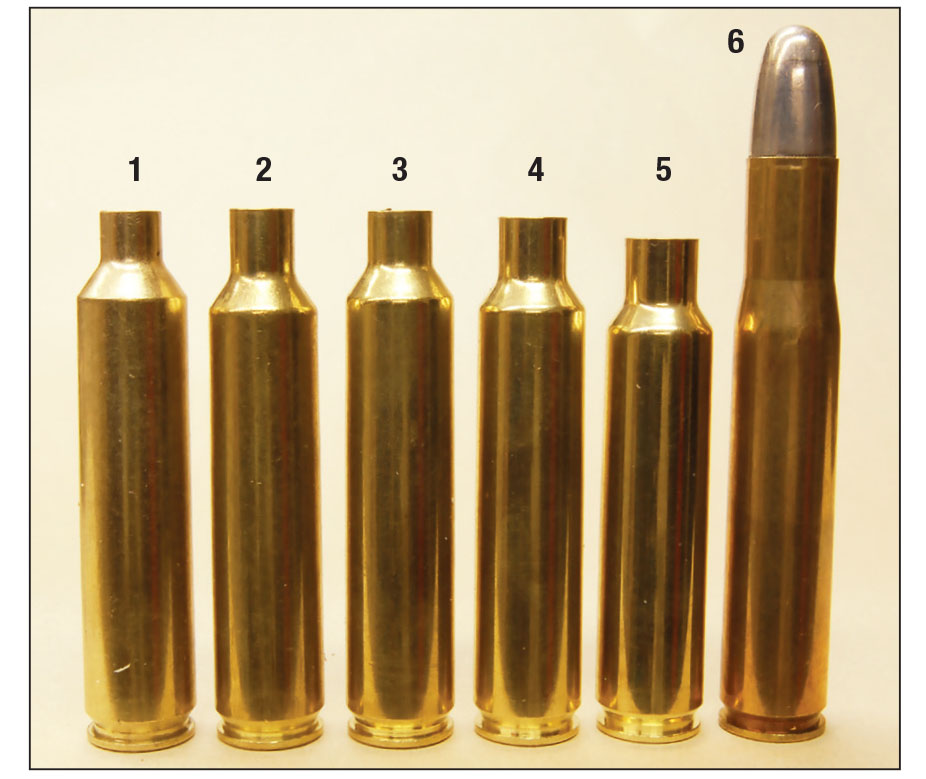
The five Nosler cartridges eventually formed from the 404 Jeffery: (1) 26 Nosler, (2) 27 Nosler, (3) 28 Nosler, (4) 30 Nosler, (5) 33 Nosler and (6 ) 404 Jeffery. Slight shoulder and neck length differences are to prevent other rounds from entering Nosler chambers.
The real question is how does the 26 Nosler stand up against similar rounds of today. Word at the time was that it was to be the most powerful factory 6.5mm hunting cartridge available.
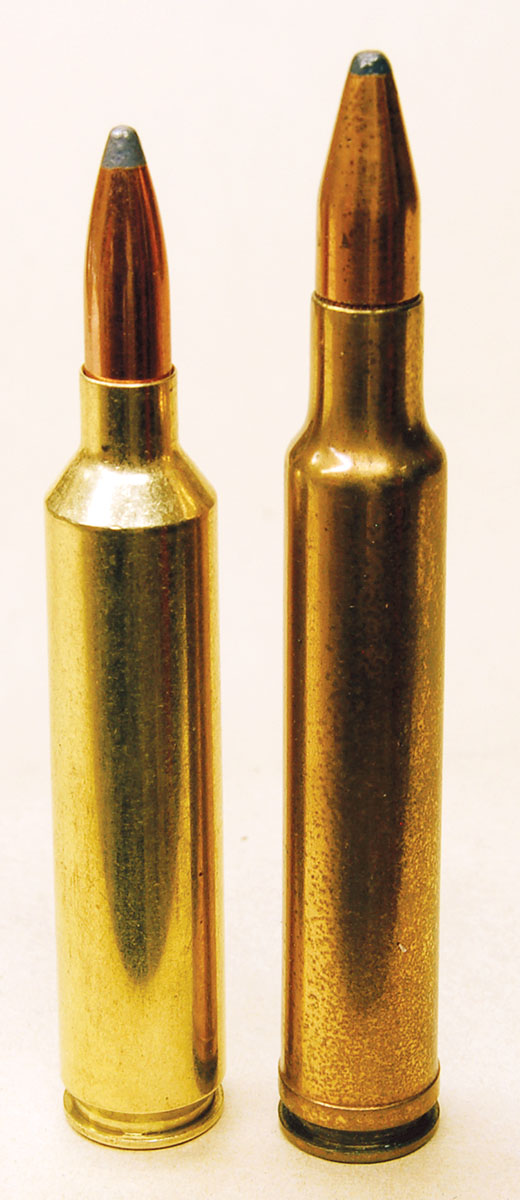
The 26 Nosler (left) and the 300 Weatherby (right) that Weatherby necked down to 6.5mm in 2017 to gain the fastest 6.5mm title.
Of course, wildcats are abundant. Every large size case from .25 to .45 caliber has been necked to 6.5mm – even the 378 Weatherby! The 300 Weatherby was reduced to form the 6.5-300 Weatherby-Wright-Hoyer as I recall. It was a very accurate 1,000-yard cartridge. Weatherby made it a factory round about 2016. Yes, it is faster than the Nosler. Where will it end?
Serious riflefolk will note that this path has been trodden before, in the 1950s to be exact. The cartridge then was the 264 Winchester Magnum. It was built on a standard 2.5-inch belted magnum case because belted cases were hot at the time and rifle fanciers had not yet heard of the 404 Jeffrey.
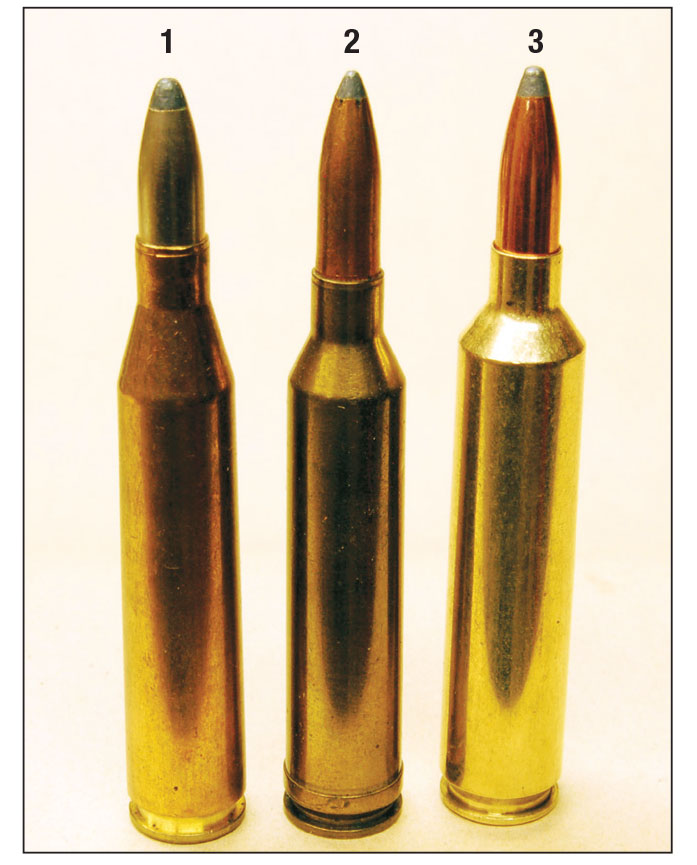
The 6.5x68mm Schuler of 1930 (1) and the 264 Winchester Magnum (2) were the only powerful factory 6.5mm cartridges until the 26 Nosler (3) came along.
The parent 404 Jeffrey case gave the 26 Nosler a .040-inch larger body diameter than the 264 Winchester Magnum, half the body taper, a bit more body length because of a slightly sharper shoulder, and some .090-inch greater case length. However, since the 264 Winchester Magnum and 26 Nosler use the same overall cartridge length, bullets are seated deeper in the Nosler, taking up space that would otherwise be used for powder. Basically, the Nosler has a 5- to 10-grain powder capacity (depending upon kernel size and density) advantage over the 264 Winchester Magnum that yields 100-150 feet per second (fps) more velocity at the same working pressure.
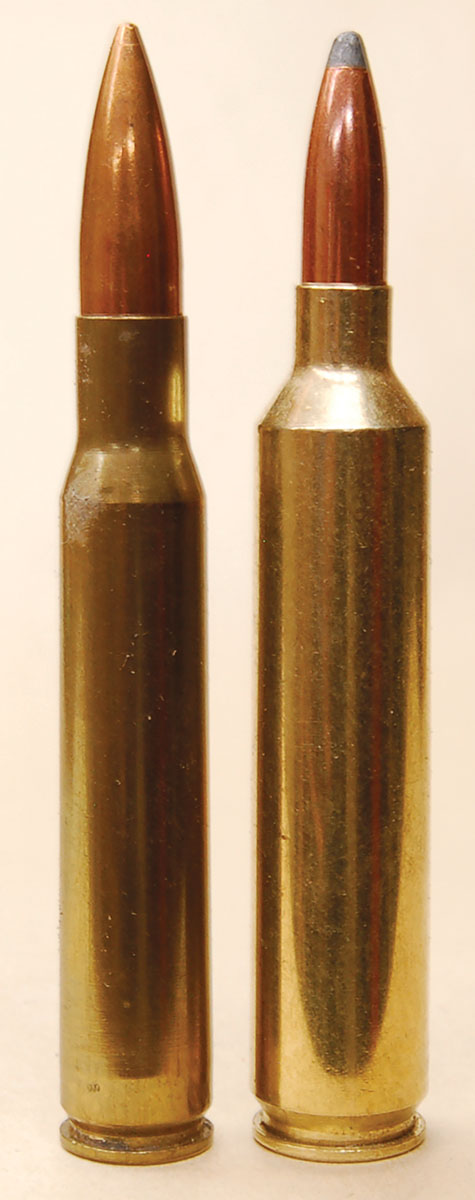
A 30-06 match load (left) and a 26 Nosler (right) loaded to an overall length of 3.335 inches for most ’06-length magazines.
Original factory loads for the 26 Nosler pushed a 129-grain AccuBond-Long Range to a published 3,400 fps muzzle velocity for 3,110 foot-pounds of energy and a 140-grain AccuBond to 3,300 fps for 3,385 foot-pounds of energy. This was from the 26-inch barrel of a Nosler Model 48 bolt gun.
Nosler then forged ahead with a 120-grain lead-free E-Tip, achieving 3,450 fps and 3,171 foot-pounds at the muzzle. It is for areas where unsupervised bullet-eating birds are present. Then there is the 142-grain AccuBond Long Range, G1 ballistic coefficient (BC) of 0.722 and 3,300 fps muzzle speed. When compared to the original 140-grain AccuBond load with a G1 BC of 0.509, the Long Range shows an increase of 200 fps and 400-foot pounds of energy at 400 yards.
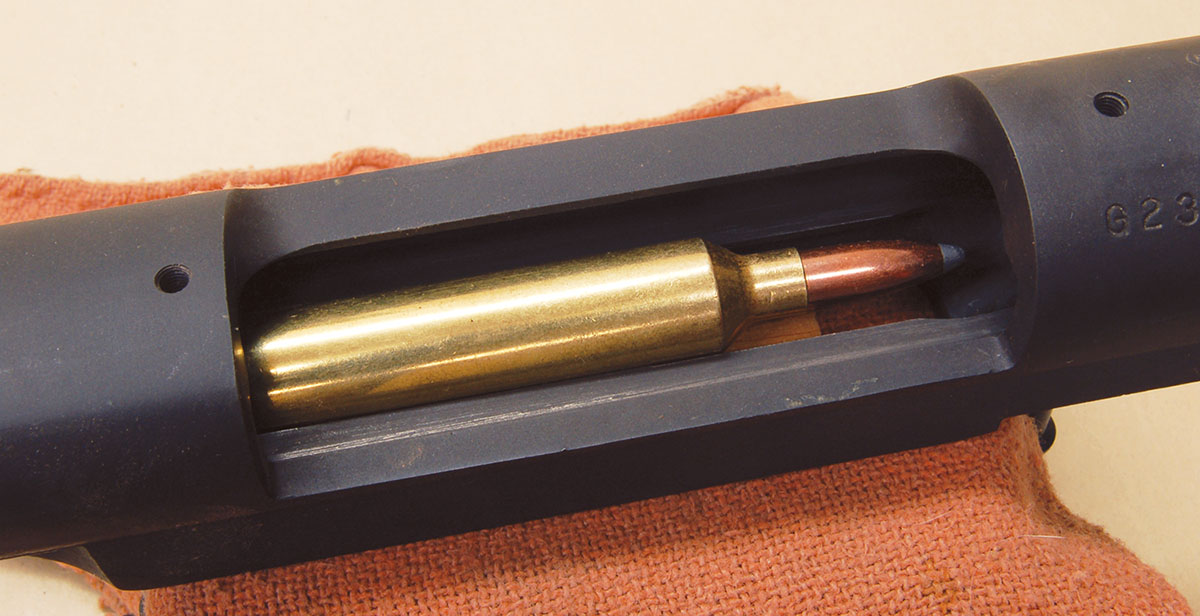
A 26 Nosler cartridge completely fills the magazine area of this 30-06 length M70 action.
At 600 yards, it’s 300 fps and 450-foot pounds greater. That's significant. In total energy at these ranges, it’s a little less than twice that for the 264 Winchester Magnum. New powders and better bullet design make all the difference.
One would think four factory loads would be enough, but Nosler also lists a 140-grain in Ballistic Tip, 140-grain Custom Competition Target and 150-grain AccuBond Long Range all at 3,200 fps muzzle velocity. If more power is needed, Nosler has also released a 27 Nosler (.270 caliber), 28 Nosler (7mm caliber), 30 Nosler (.30 caliber) and 33 Nosler (.33 caliber) all on the same case. The slight difference in shoulder and neck lengths (shown in the photo) is supposed to prevent other similar rounds from being fired in Nosler chambers and vice versa.
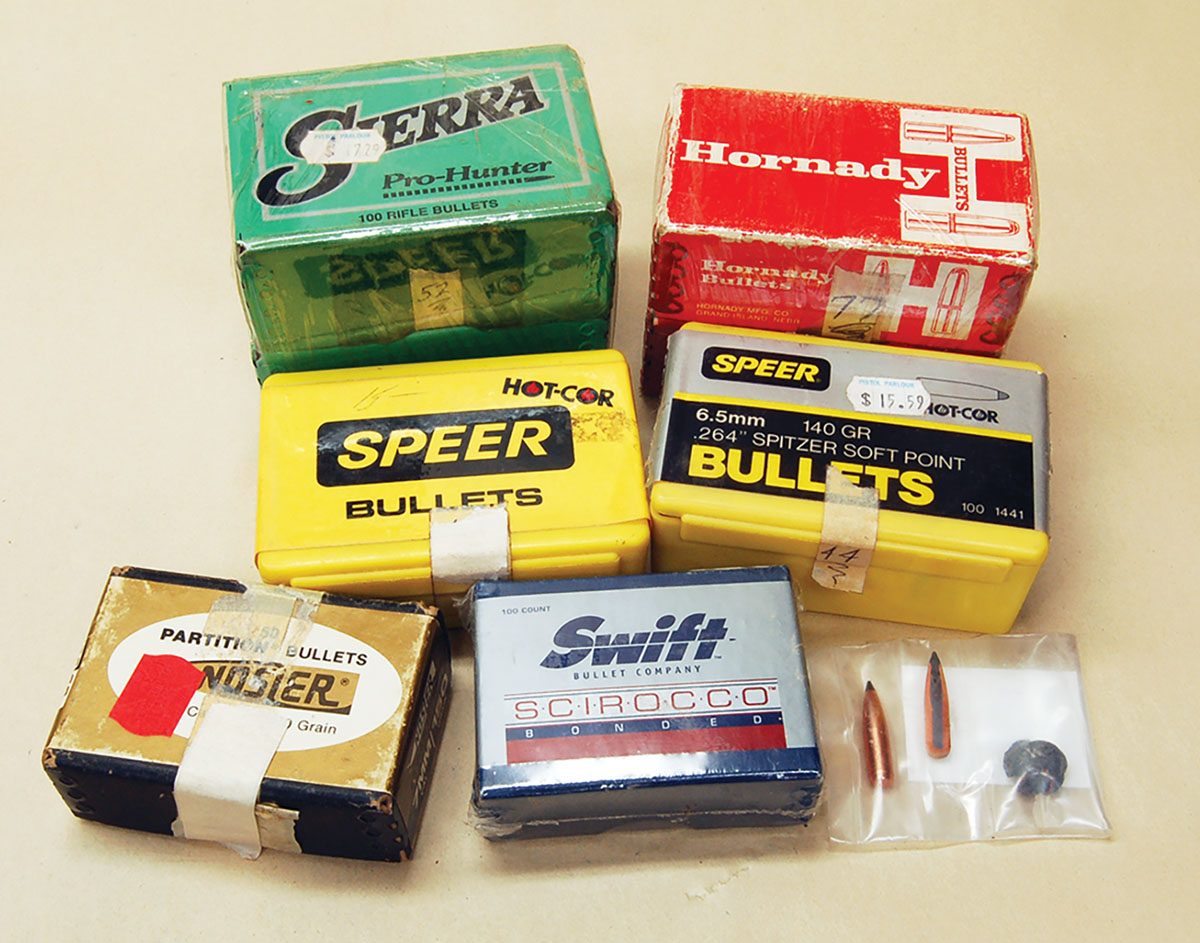
There are many good cup-and-lead-core bullets available today. The old Nosler Partitions were purchased for my 264 Winchester Magnum long ago.
Even though the 26 Nosler factory loads are quite powerful, carrying over 2,000-foot pounds of energy past 400 yards for the lead-core bullets, handloaders will want to do their thing. I could find no other source of 26 Nosler ammo, but the company sells it along with bullets and new unfired cases directly to handloaders. Hornady also sells empty cases. Factory velocities will be hard to duplicate because only the very slowest powders are suitable. Think Ramshot Magnum, Hodgdon US-869, 50 BMG and Retumbo along with Alliant Reloder 50 and Winchester StaBALL HD.
The success of the 26 Nosler is problematic. It’s a fine cartridge but a bit much for most deer hunters. It also requires expensive bullets to control expansion at the 3,000 fps impact velocity at 200 yards and under. No one seems to be chambering rifles for it except Nosler and custom rifle makers. We shall see.
.jpg)









.jpg)


